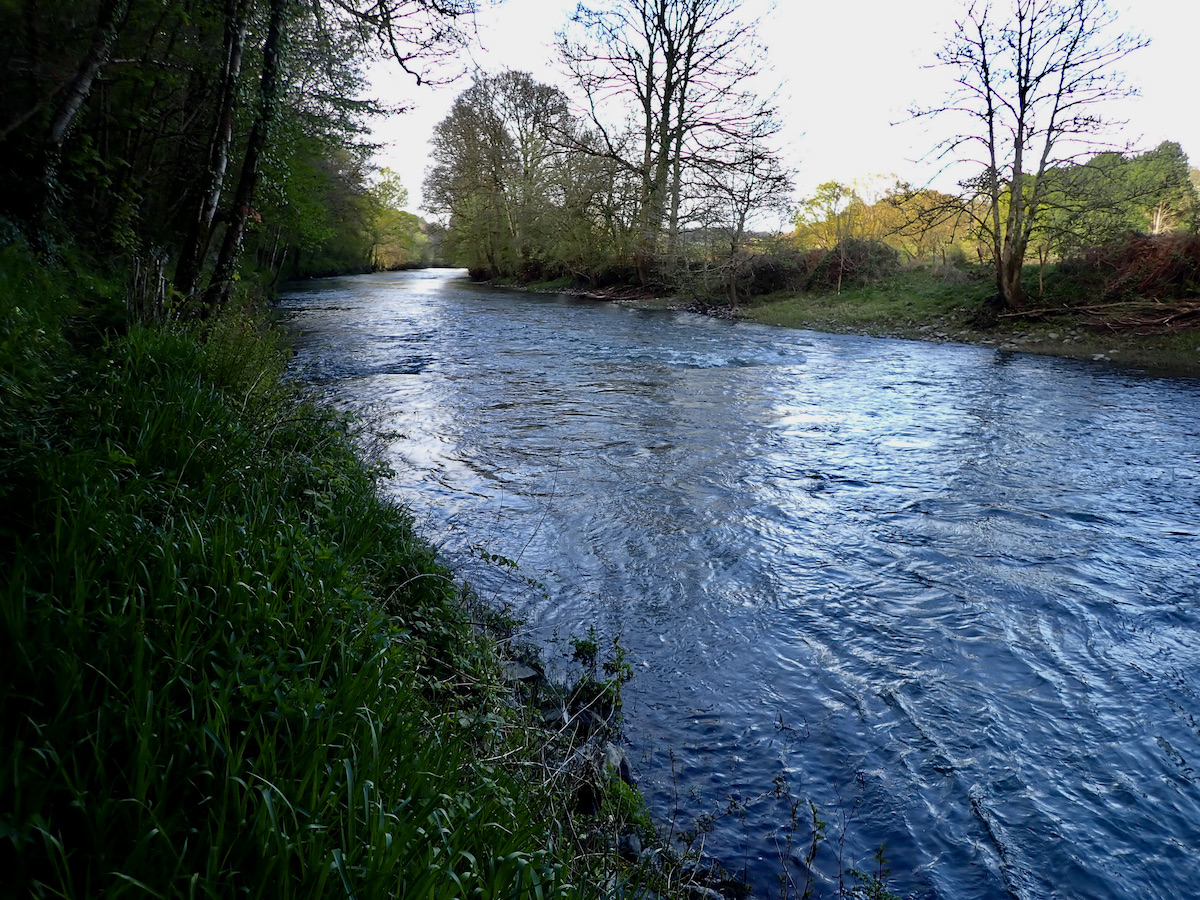Scott Allan has set the new lake record on Beatties lake with a 39lb 2oz mirror carp from the inlet swim on Beatties lake caught on Mainline cell boilies.
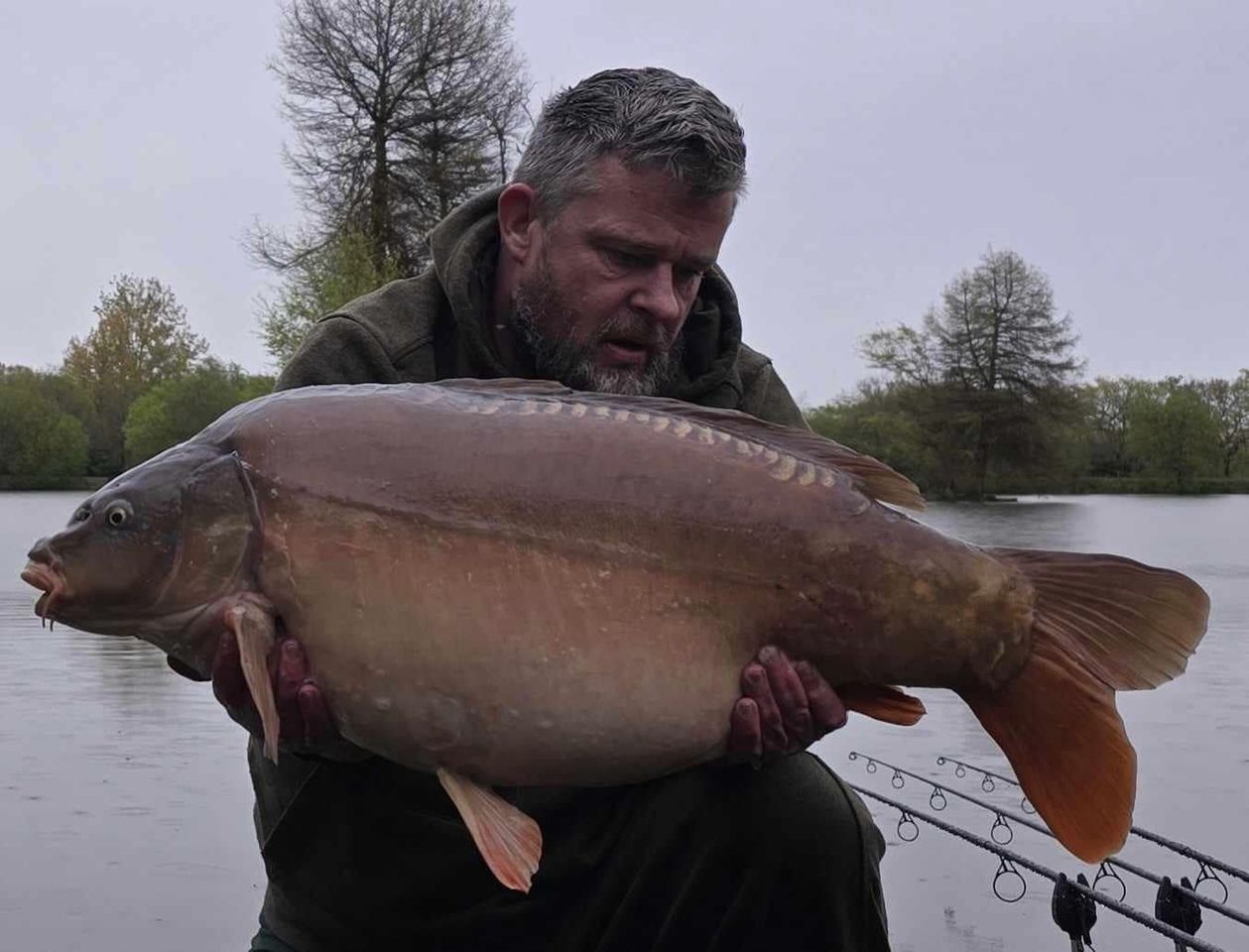
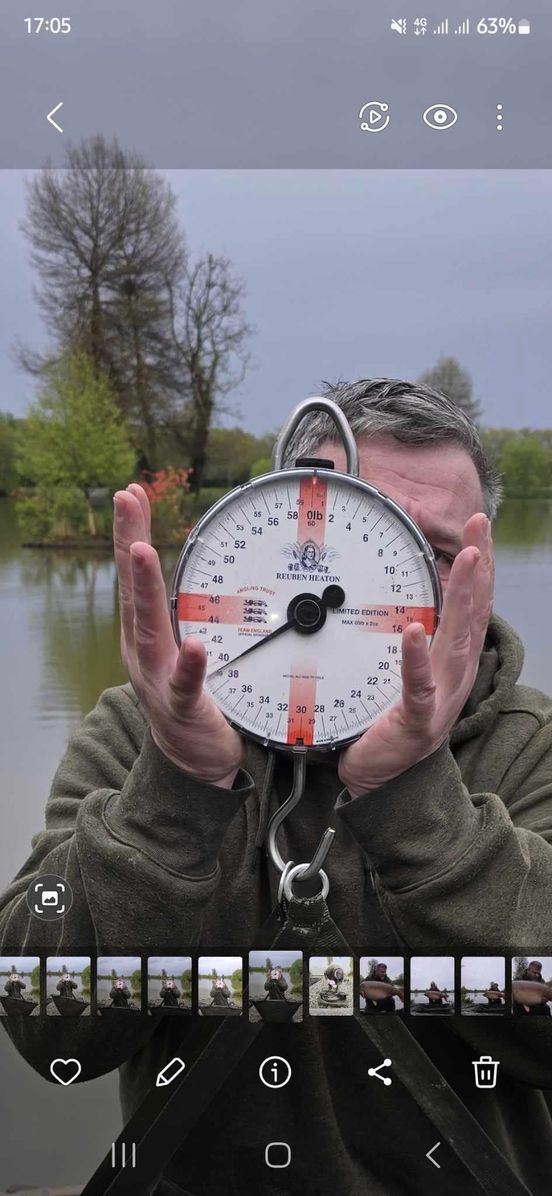

Snowbee Ambassador Jeff Pearce and I visited Anglers Paradises Day Ticket Trout Lake during May last year and enjoyed a rewarding days fishing catching rainbow trout to over five pound and tiger trout estimated at 8lb.
We were both keen to return and arranged a visit with Go-Catch representative Peter Skrivanos.
After hearing reports of some stunning fish in recent weeks we were full of optimism as we headed across the meadow to the water.
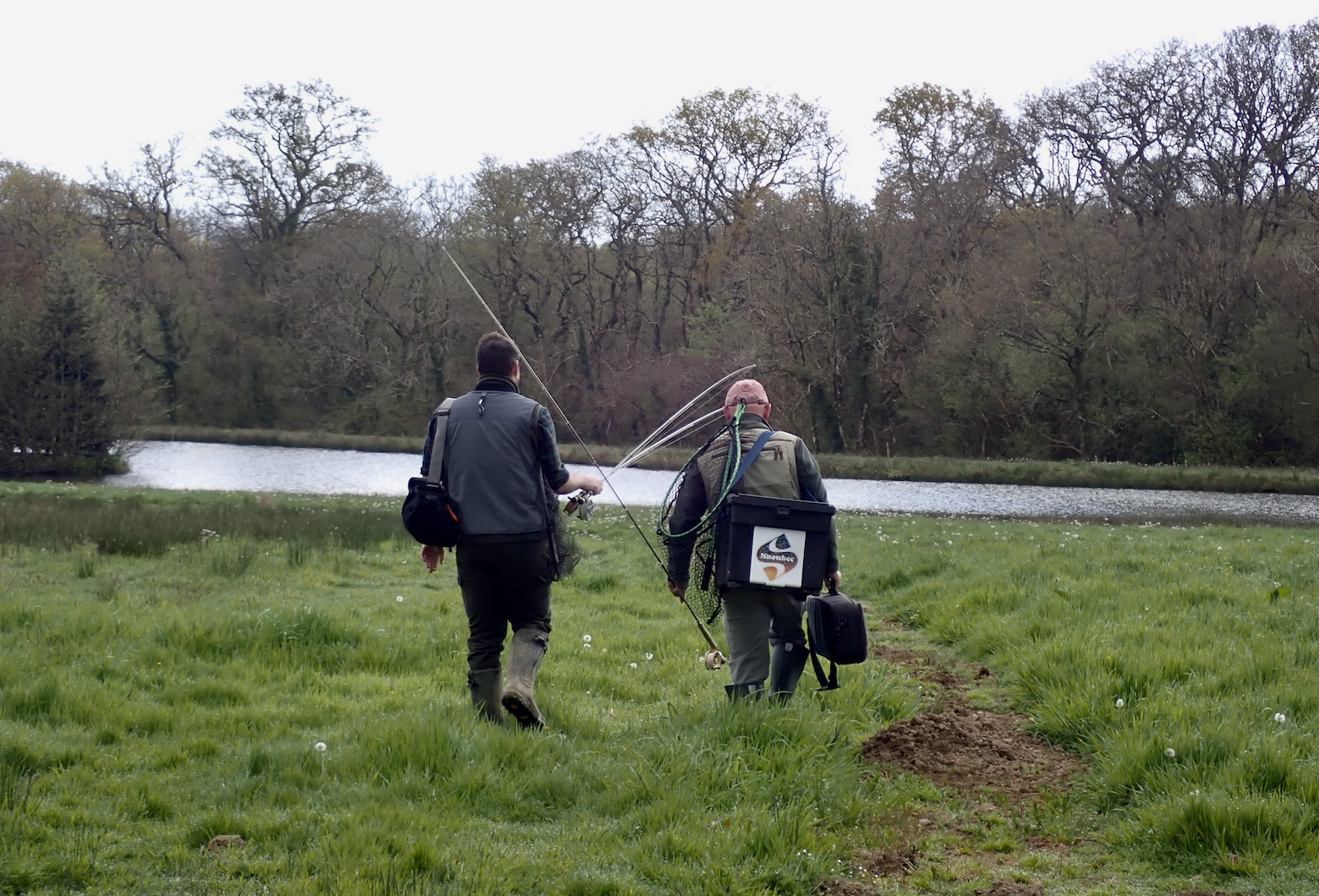
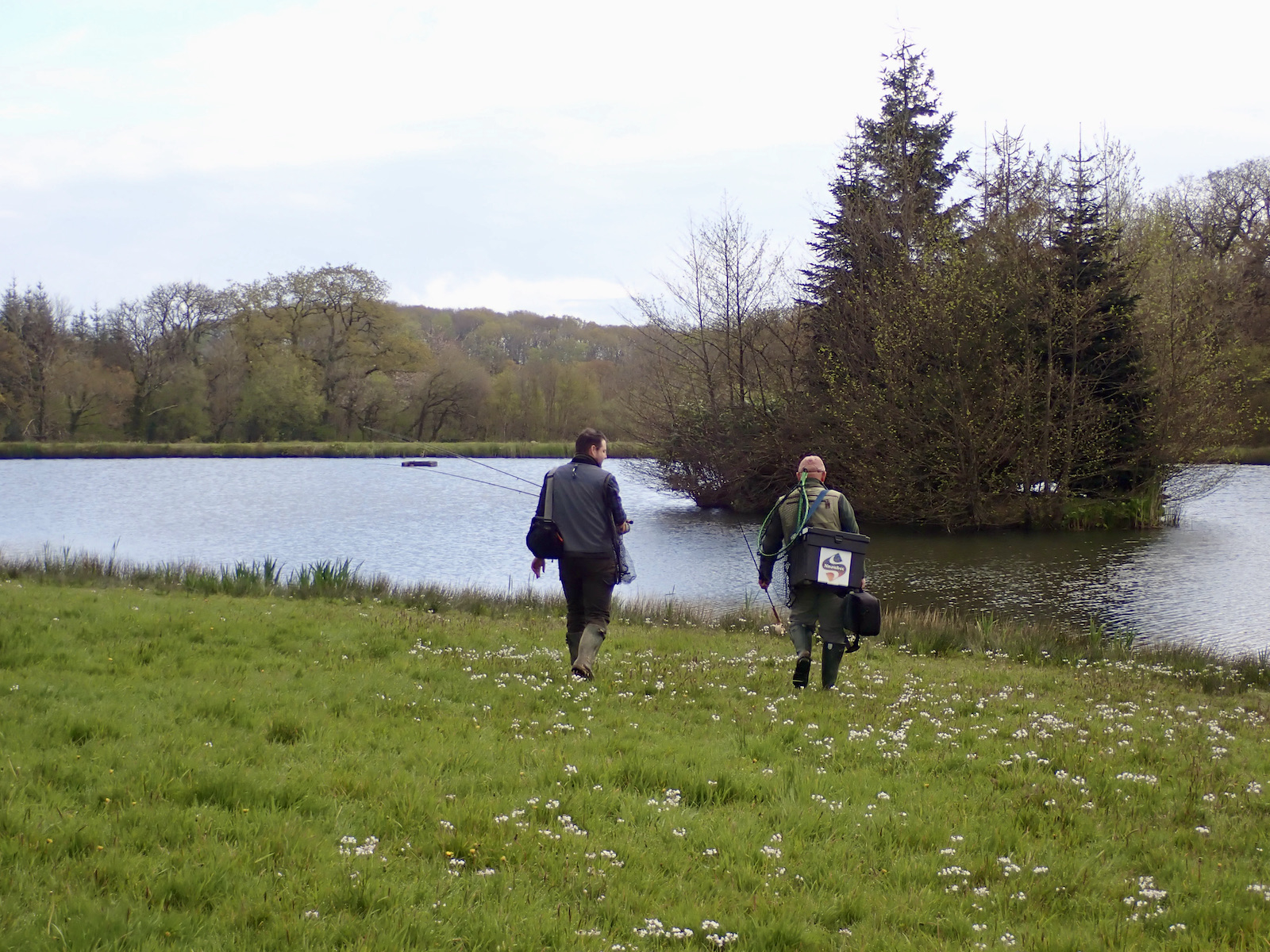
Verdant green was appearing on the trees and cuckoo flowers decorated the lakeside grassland. Despite obvious signs of spring a cold North East breeze made it feel more like winter. There was at least a touch of blue between the clouds lifting the spirits as we made our first casts.
Peter was starting with a bold approach tying on a rather gaudy lure that he assured us would appeal to the aggressive tiger trout that reside within the lake.
I tied a tried and trusted gold head damsel nymph to my 10.5lb b.s XS plus Gold leader and proceeded to search the water with an Intermediate Snowbee XS Fly Line. I was well aware that the lake holds big hard fighting trout and wanted to get the fish to the net as quickly as possible to ensure they could be returned safely to the water after a minimal battle.
After just a few minutes Peter hooked into a hard fighting tiger trout that gave a fight out of proportion to its moderate size of perhaps 1lb 12oz. Peter kept the fish in the net and slipped out the barbless hook allowing me to get a quick picture before the fish swam briskly back into the lake.
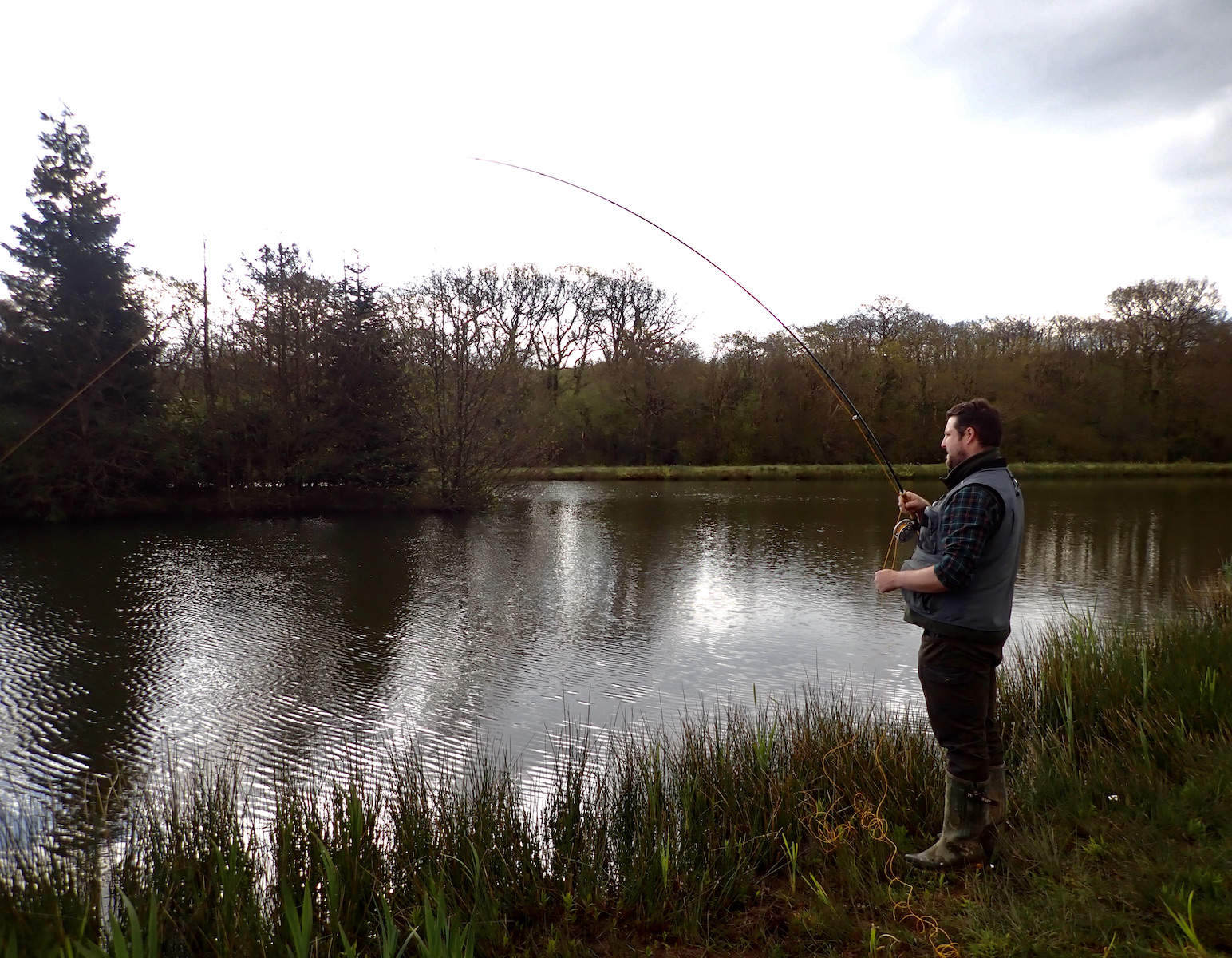
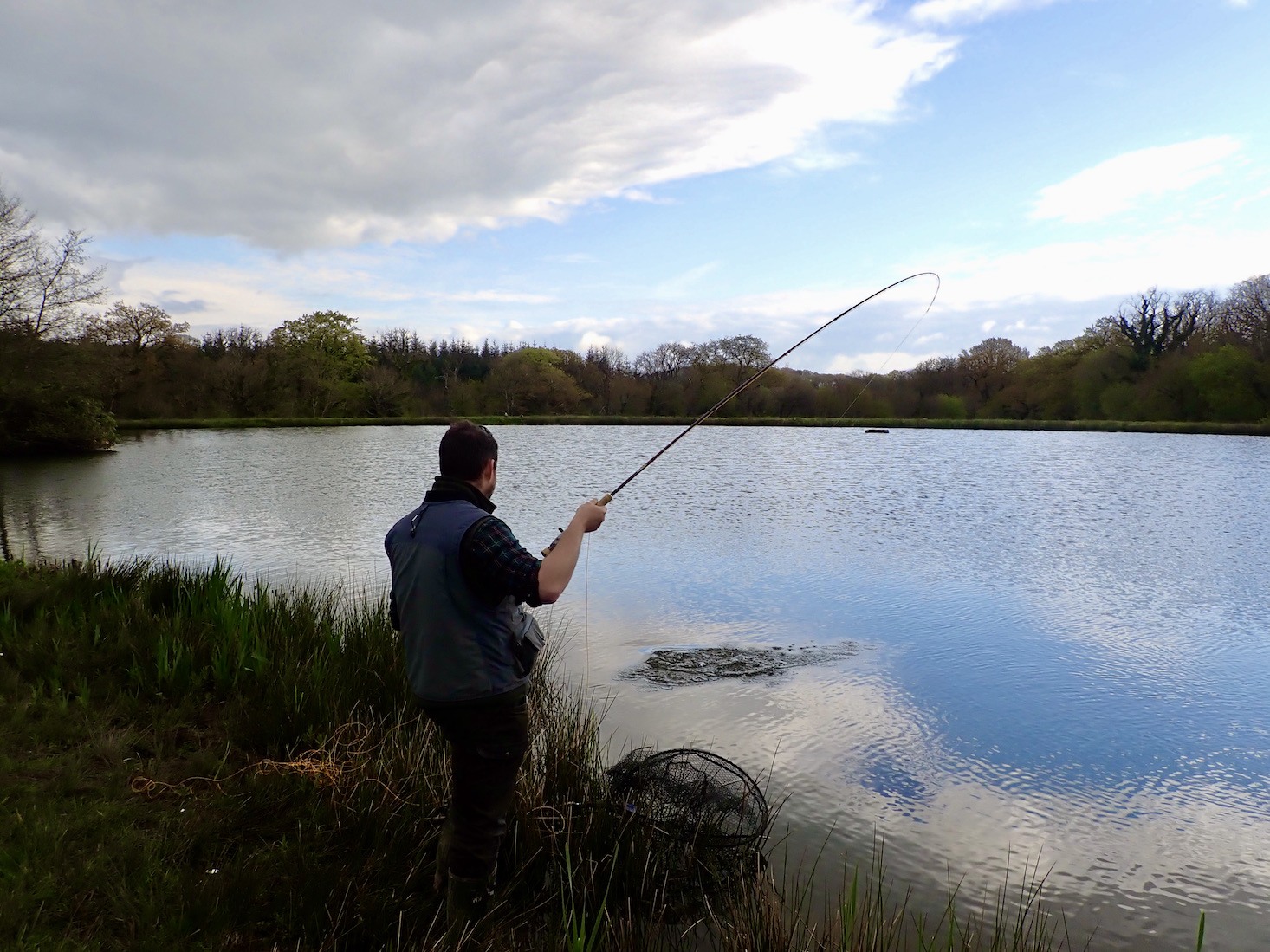
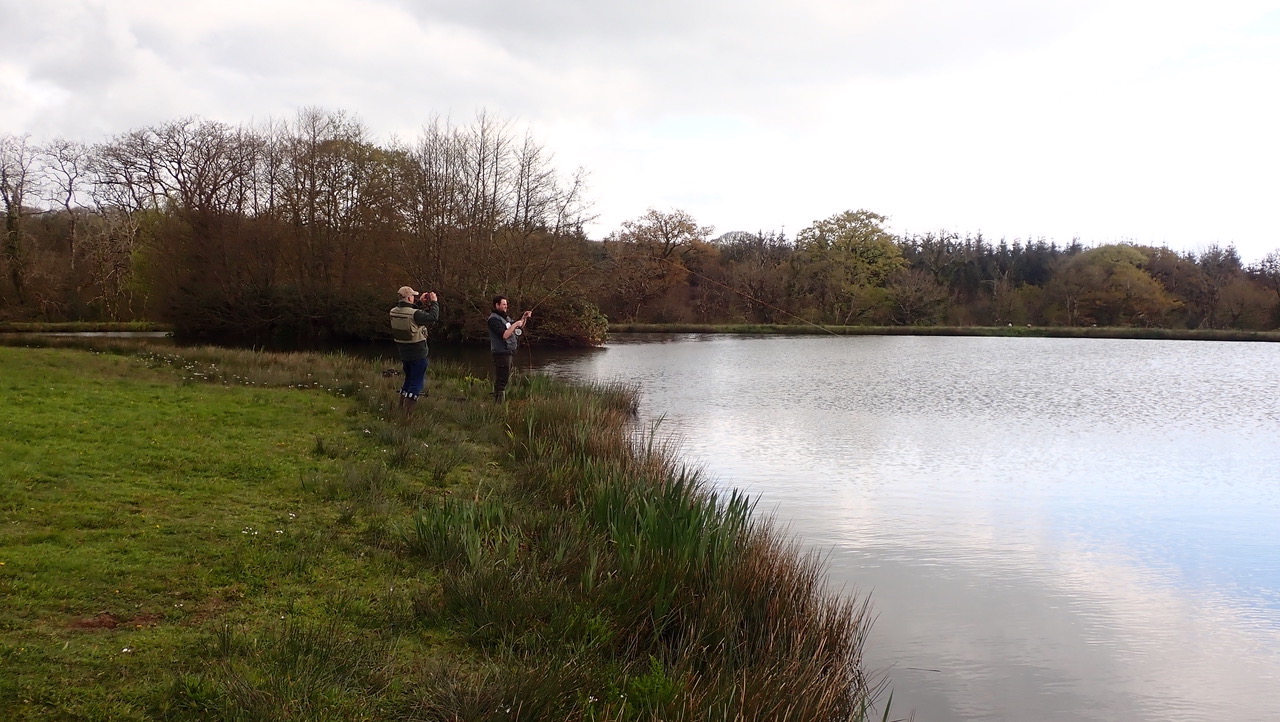
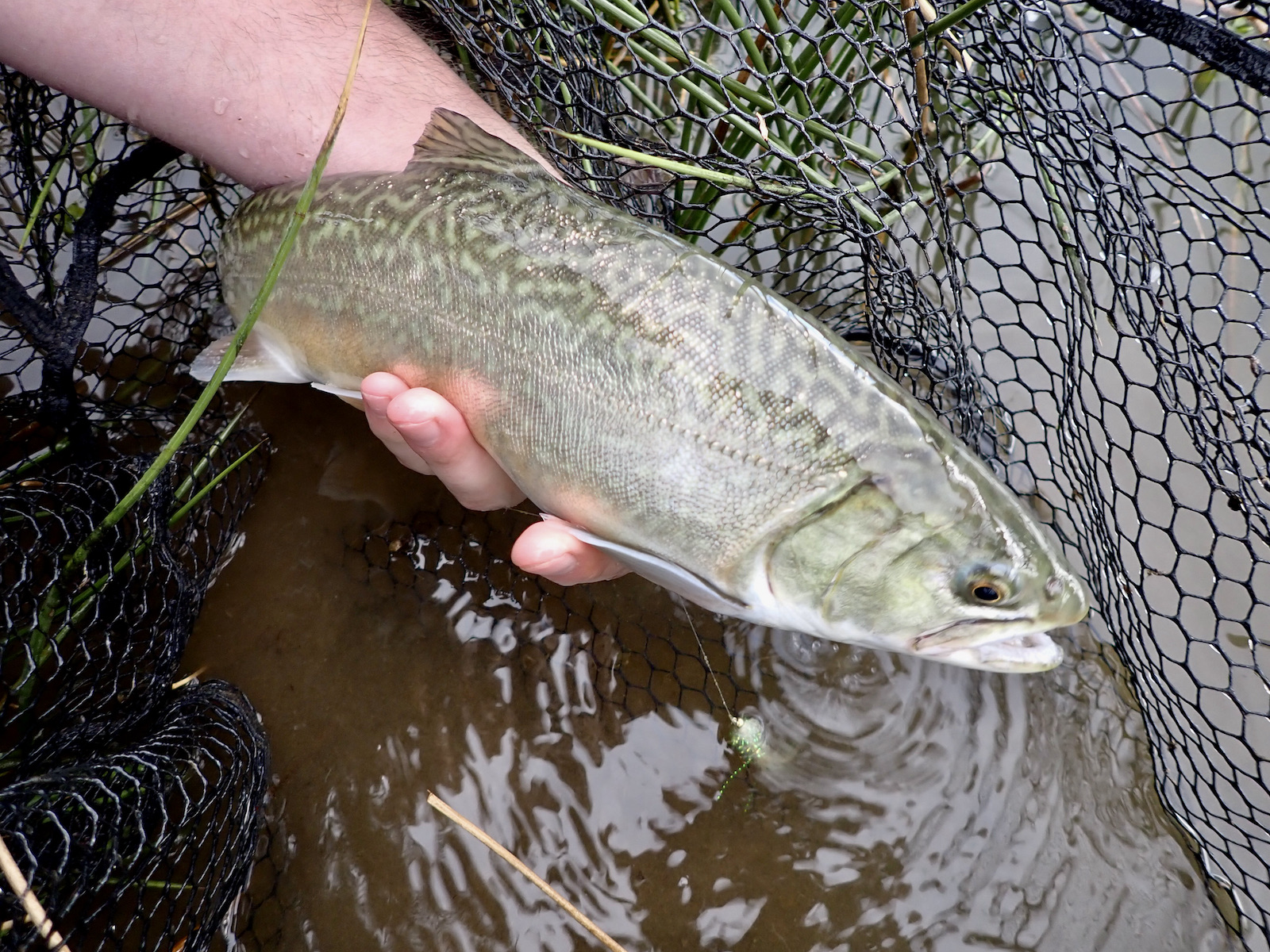
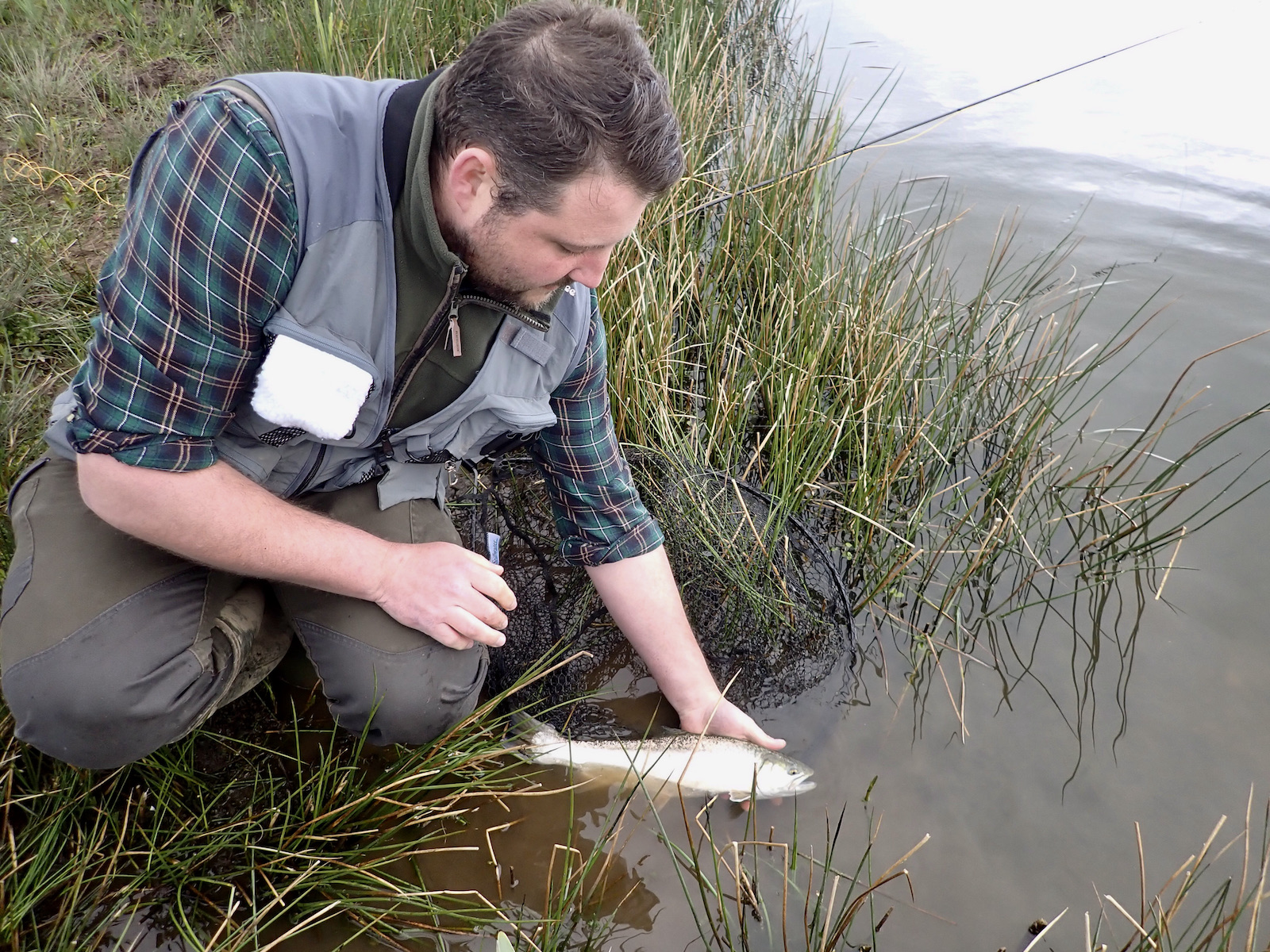
After twenty minutes or so without any action I moved to the lakes corner and hooked a handsomely marked brown trout that slipped the hook before visiting the net.
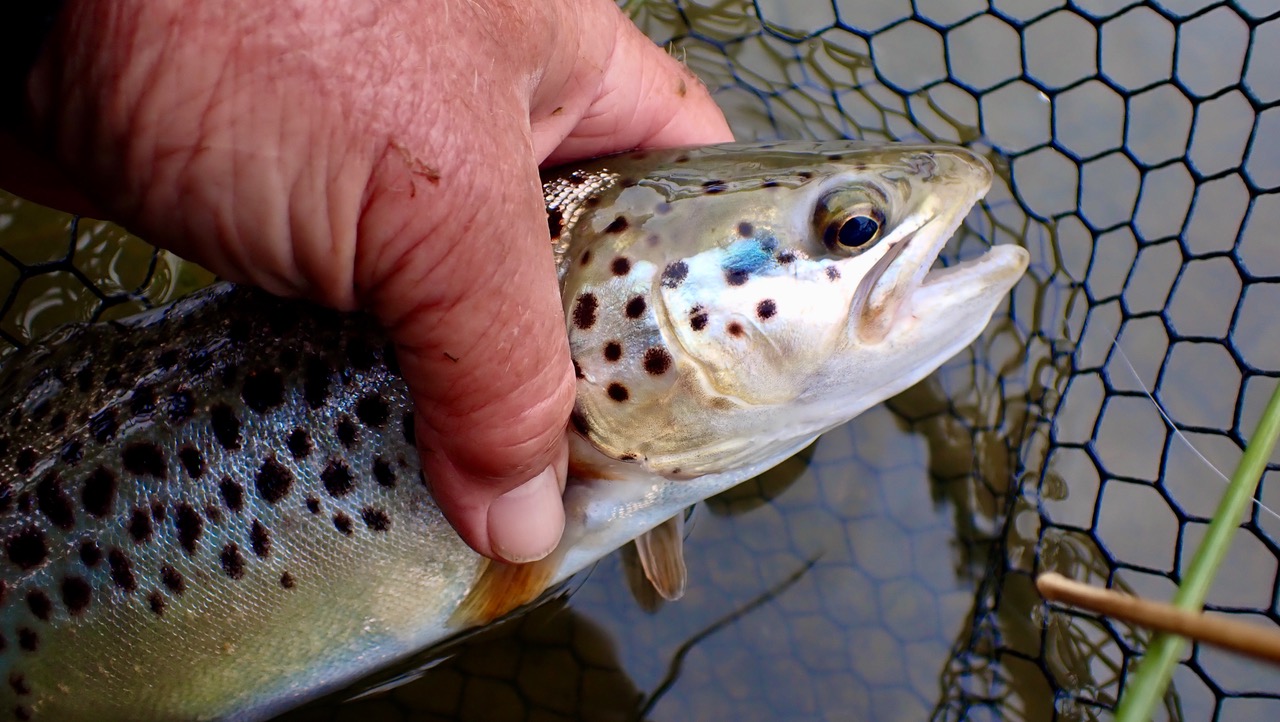
As the morning ebbed slowly away it became clear that the residents were playing hard to tempt. Jeff caught a tiger of 1lb 8oz and and a small handsome brown trout we all caught numerous small perch, stripy sergeants that evoke memories of childhood days beside still-waters.
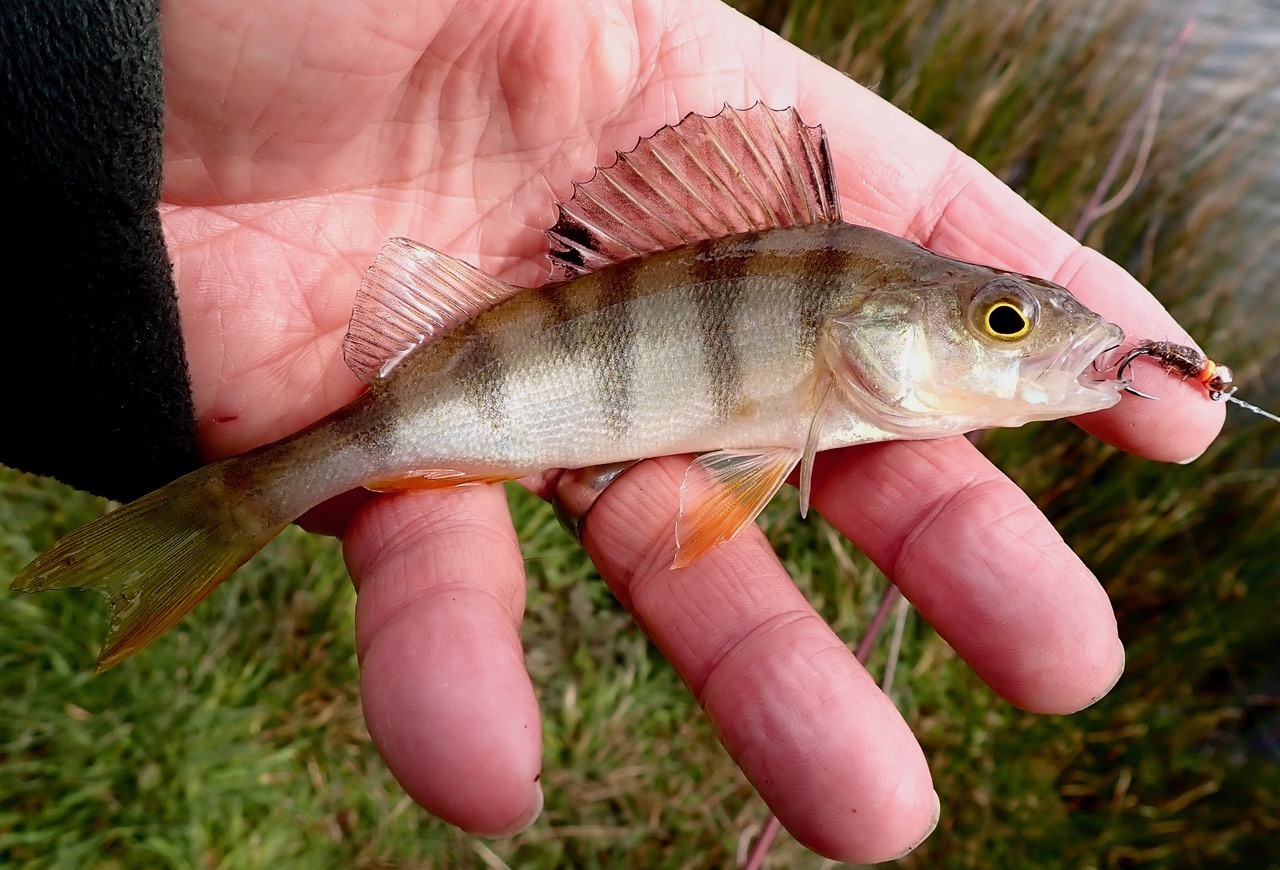
The vibrant sounds of woodpeckers drilling in the woods drifted across the valley. The evocative call of a cuckoo lifted the spirits a sure sign that summer is on its way after what seems a long wet winter and Spring.
I noticed several fish rising close to lakes overflow tower and changed to a floating line, suspending a black buzzer beneath a sight indicator.
Casting this out I commenced an ultra-slow retrieve just keeping the line tight in the gentle breeze. I watched the indicator intently and lifted the rod sharply when I noticed it plunge beneath the surface. The rod a Snowbee Diamond 7wt took on an impressive curve and line was ripped from the reel as a trout of a good size powered away. To my concern the powerful fish seemed determined to head for the overflow pipe and whilst I frantically tried to prevent it I was unable to slow its progress. The fish of perhaps 7lb erupted from the lake giving a tantalizing glimpse of rainbow hued flanks before taking the line around the concrete the hook shank parting as the line momentarily snagged the structure.
Jeff and Peter looked across the lake alerted to my cursing cry! Encouraged by this, I tied on a new buzzer and started afresh.
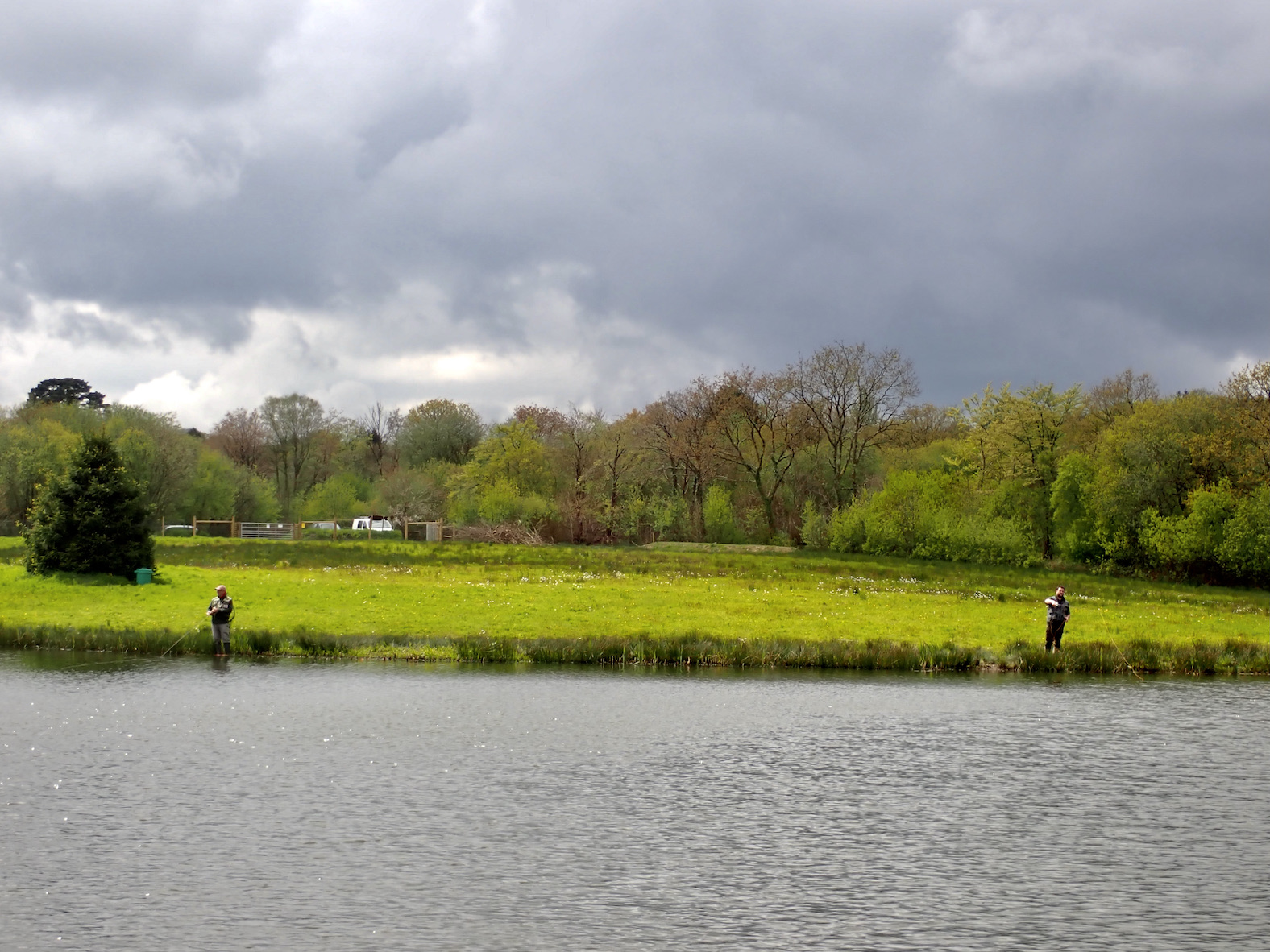
The indicator dipped and I connected with what felt a very good fish. Once again its power surprised me and I endeavoured to get it away from the overflow pipe. To my dismay the powerful fish got the upper hand and won its freedom.
Peter and Jeff had also enjoyed brief connection with large fish that came adrift any one of which would have made it a day to remember.
As the afternoon evaporated Peter hooked into his second fish, a spartic nudging a couple of pounds.
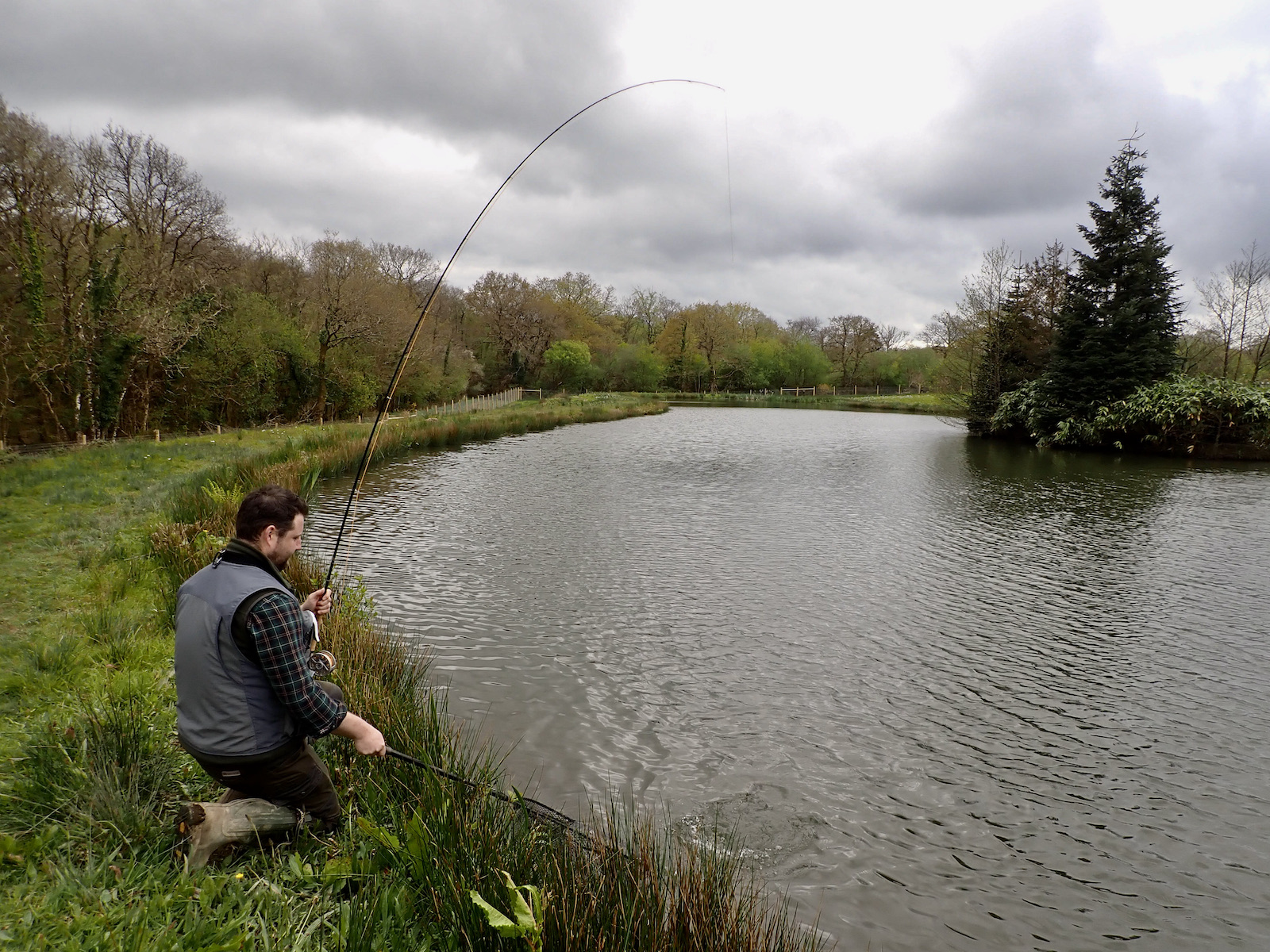
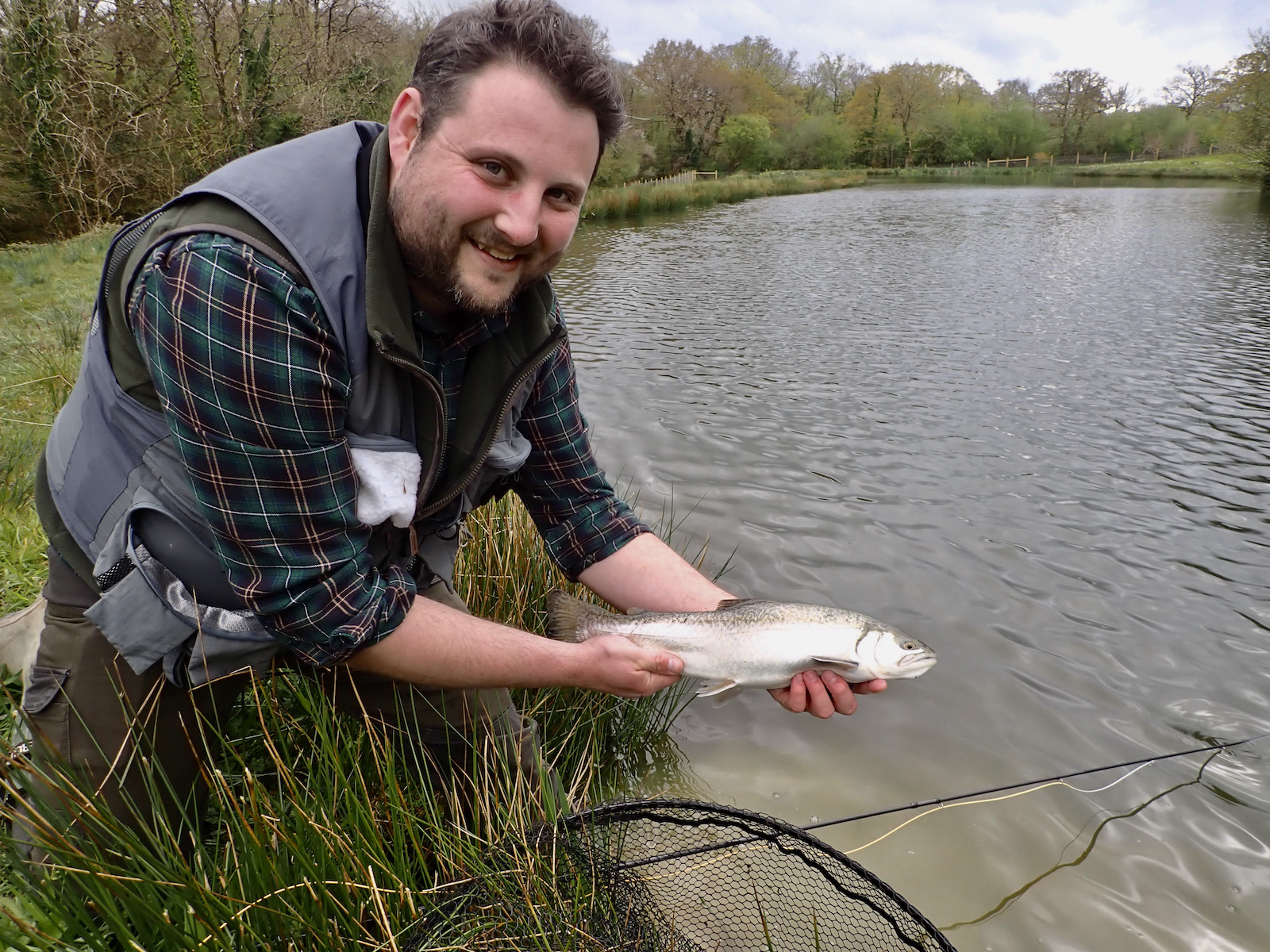
Conceding that it was hard going Peter decided to head home before the traffic got bad. Jeff and I persisted convinced that at any moment the line would zip tight and one of the lakes special fish would make an error.
Jeff pointed out the orange of my lost indicator at the upwind end of the lake. I wondered if the fish was still attached? I walked around and after a couple of casts managed to hook into the indicator. The fish was no longer attached but the buzzer was still there so at least the barbless hook had fallen free.
By late afternoon the cold wind and lack of action started to take its toll and we eventually conceded defeat agreeing to return in search of the large trout that dwell within the lake that nestles within a wooded valley.
Anglers Paradise Trout Lake is strictly Catch and release with barbless hooks, single flies, rubber nets and unhooking matts mandatory. I personally try to unhook fish in the water returning with minimal handling.
Catch and release is a concept withing trout fishing circles that stimulates some debate. Some believe it makes the fish wary and harder to tempt. Whilst there could be a bit of truth in this it also enables trout fishing for large fish at a very reasonable price.
Day Tickets for Anglers Paradise can be purchased via https://www.gocatch.fish
The Braunton Bait Box are now stocking Carp, Coarse Fishing Baits and tackle providing a convenient location and service for anglers in the Braunton Area. This a very welcome development for North Devon’s anglers following the announcement that Quay Sports is closing in early July.
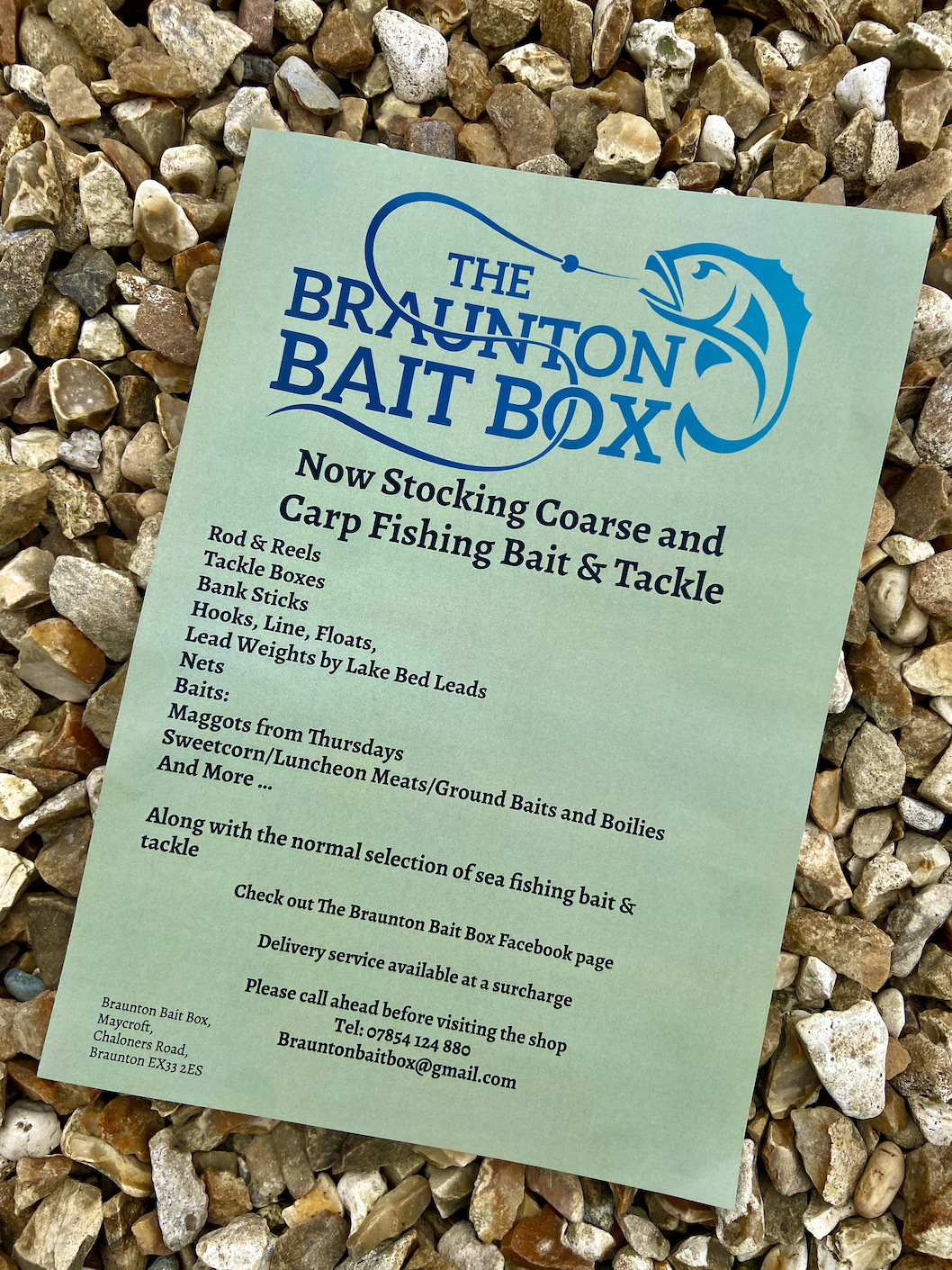
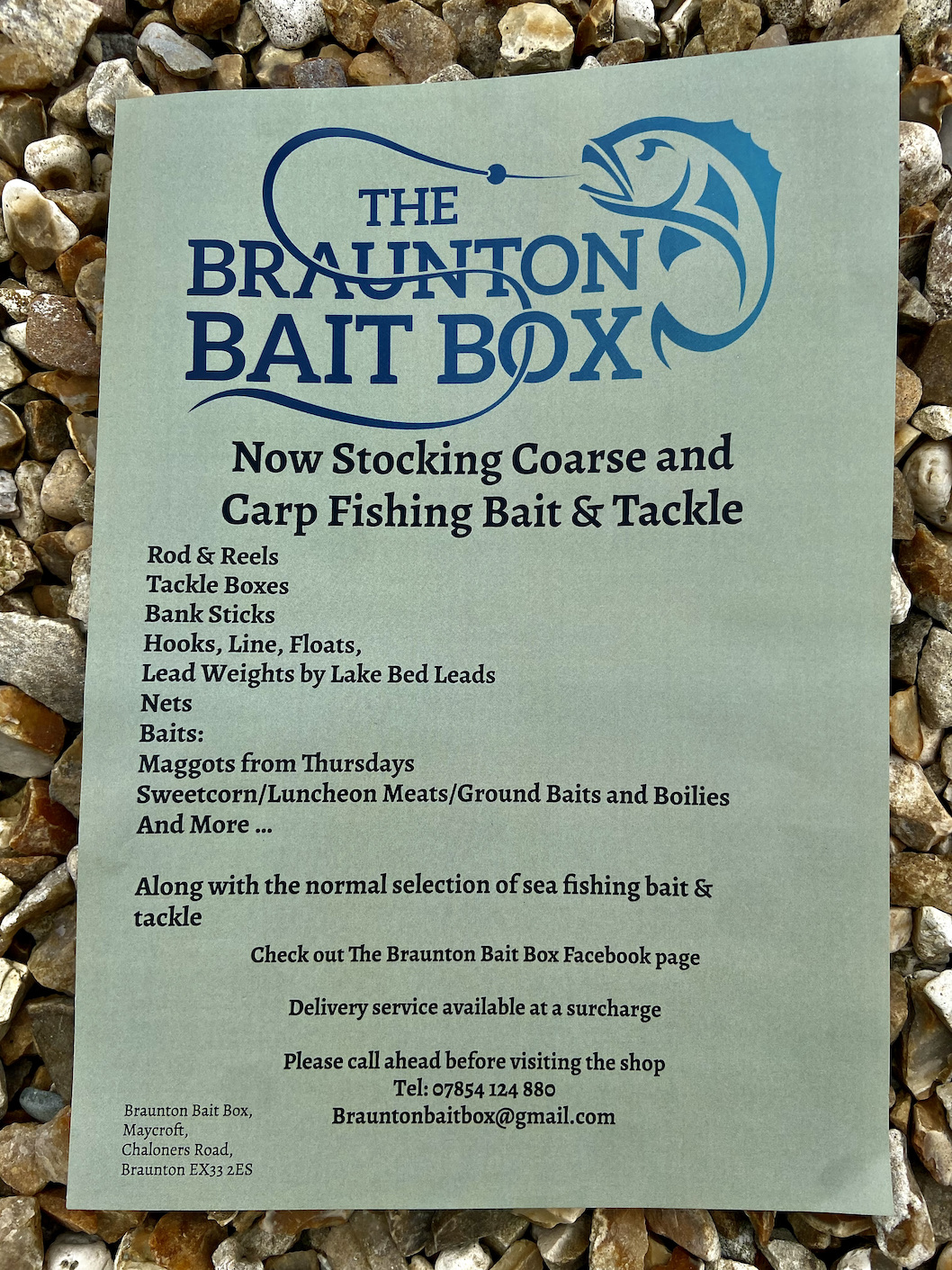
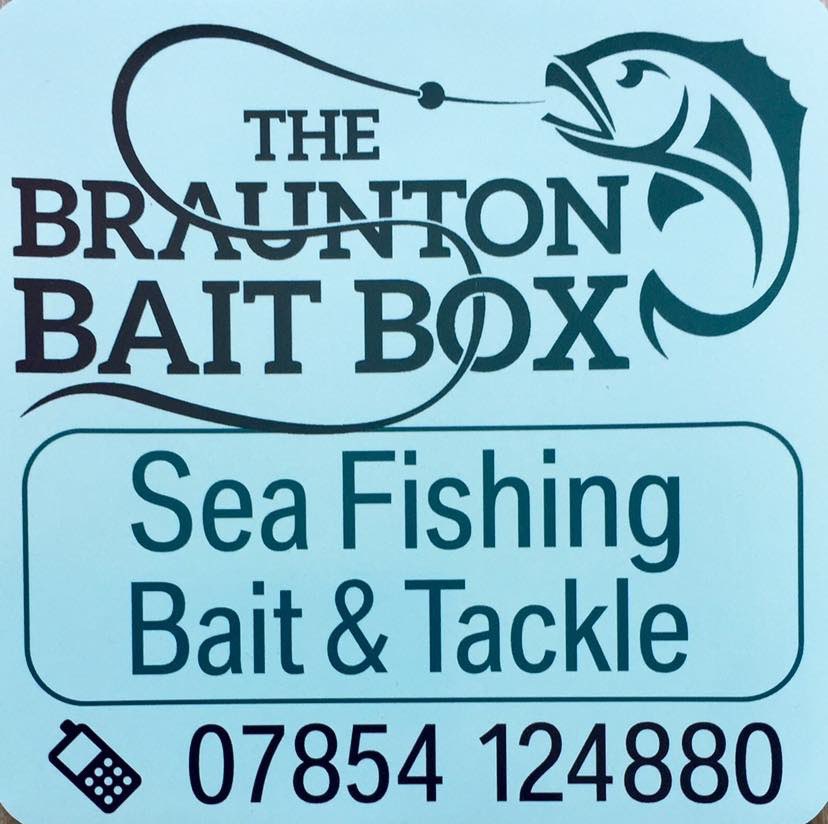
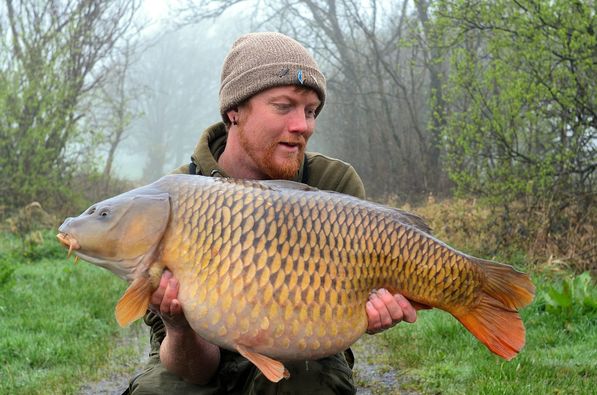

Combe Martin SAC members ventured to Portishead Marina in search of the large mullet that reside within the sheltered waters. The day commenced with heavy rain falling and a bitterly cold North wind that ensured that breakfast the first item on the days agenda.
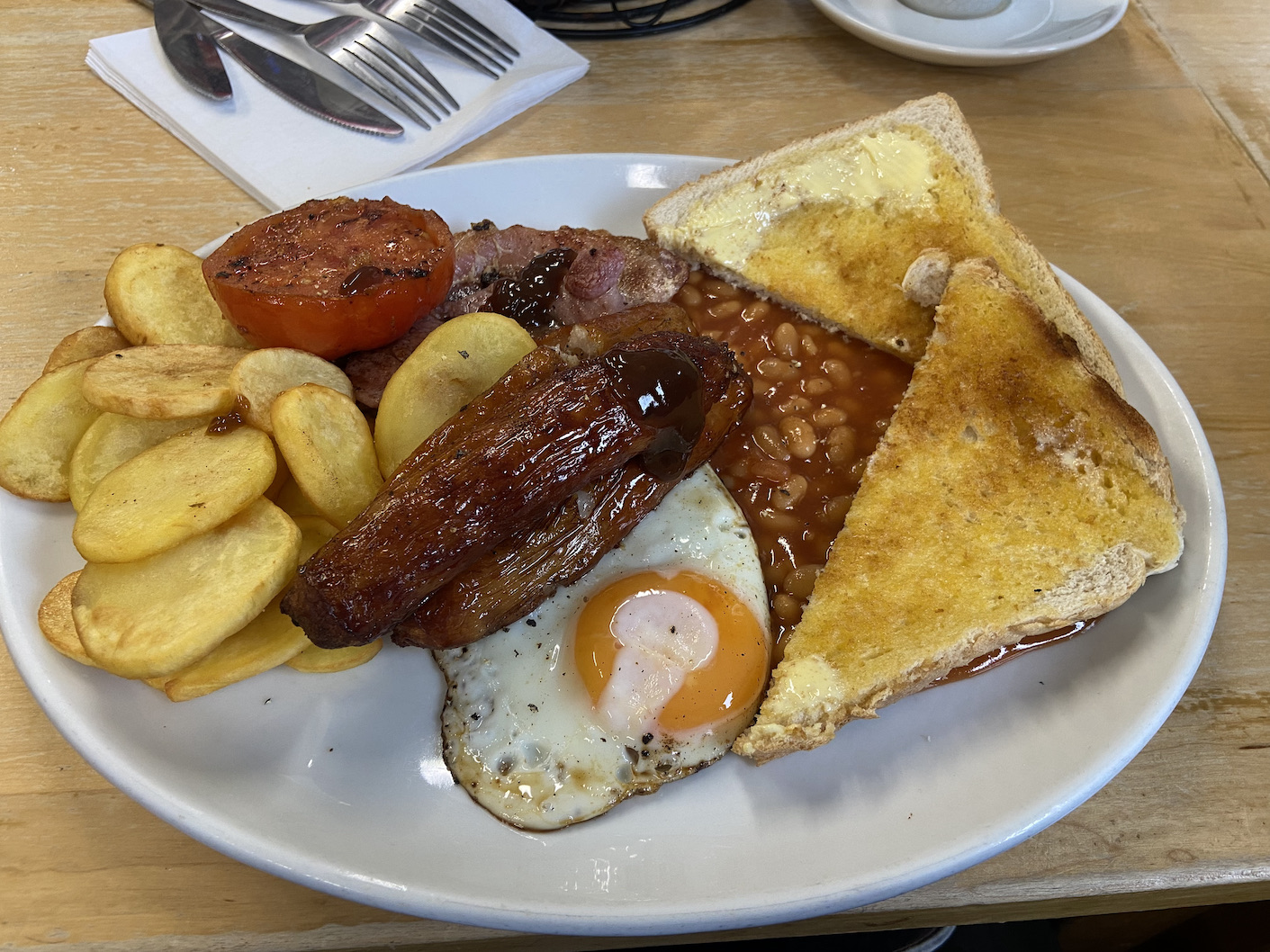
Fortified with full English and hot coffees members explored the confines of the marina. The mullet proved elusive with John Shapland securing the only fish of the day a superb specimen of 4lb 2oz.
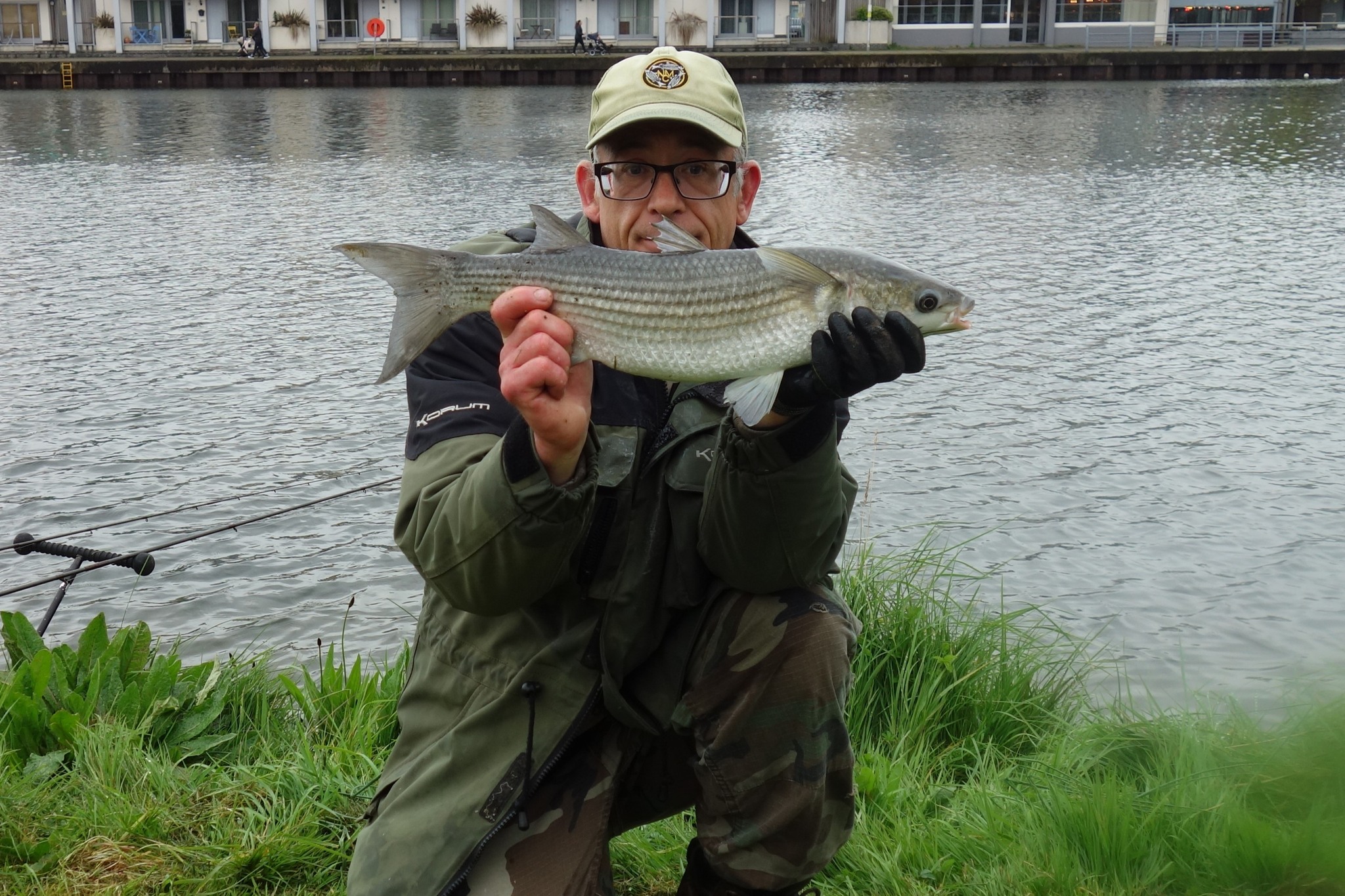
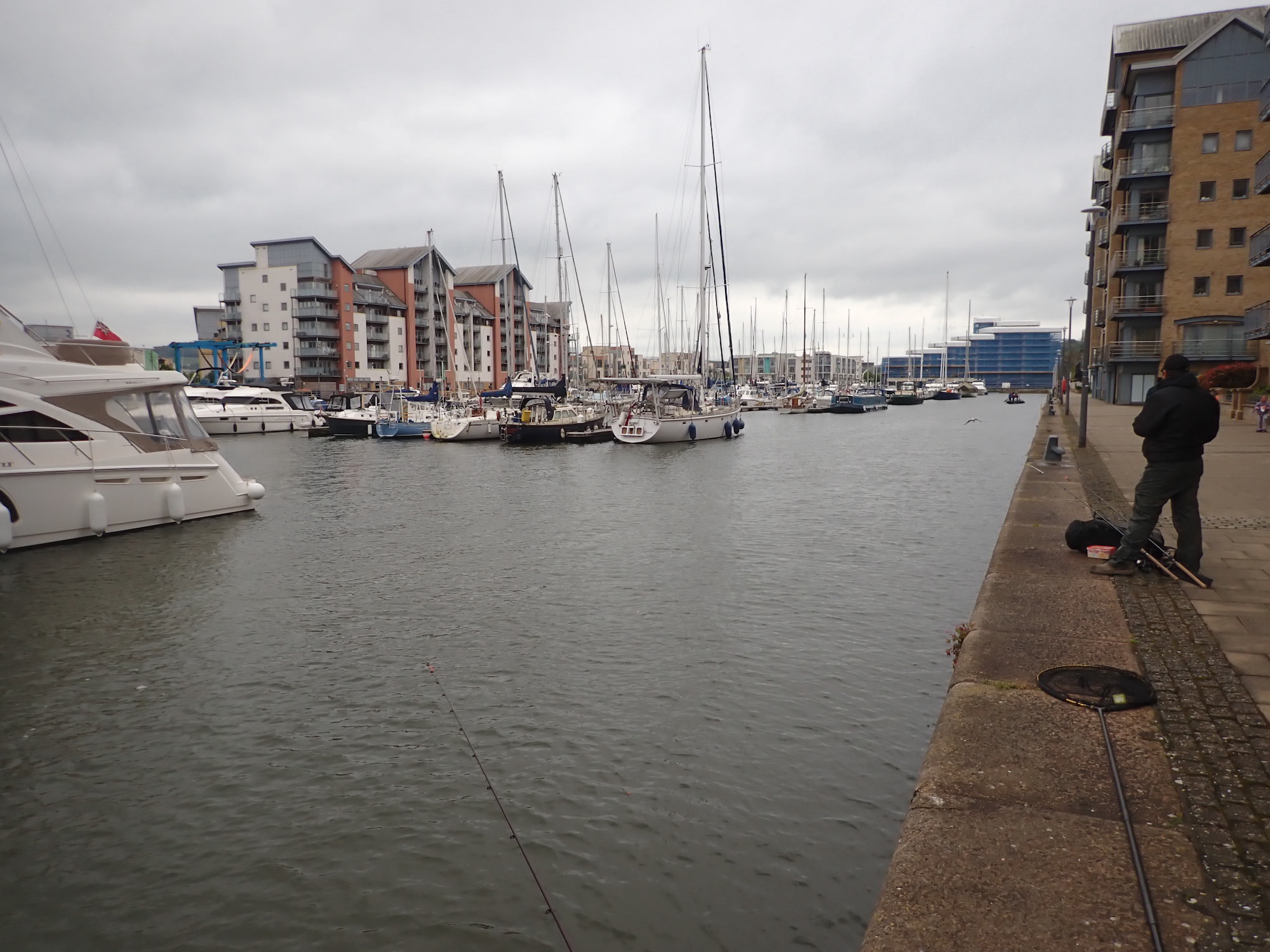
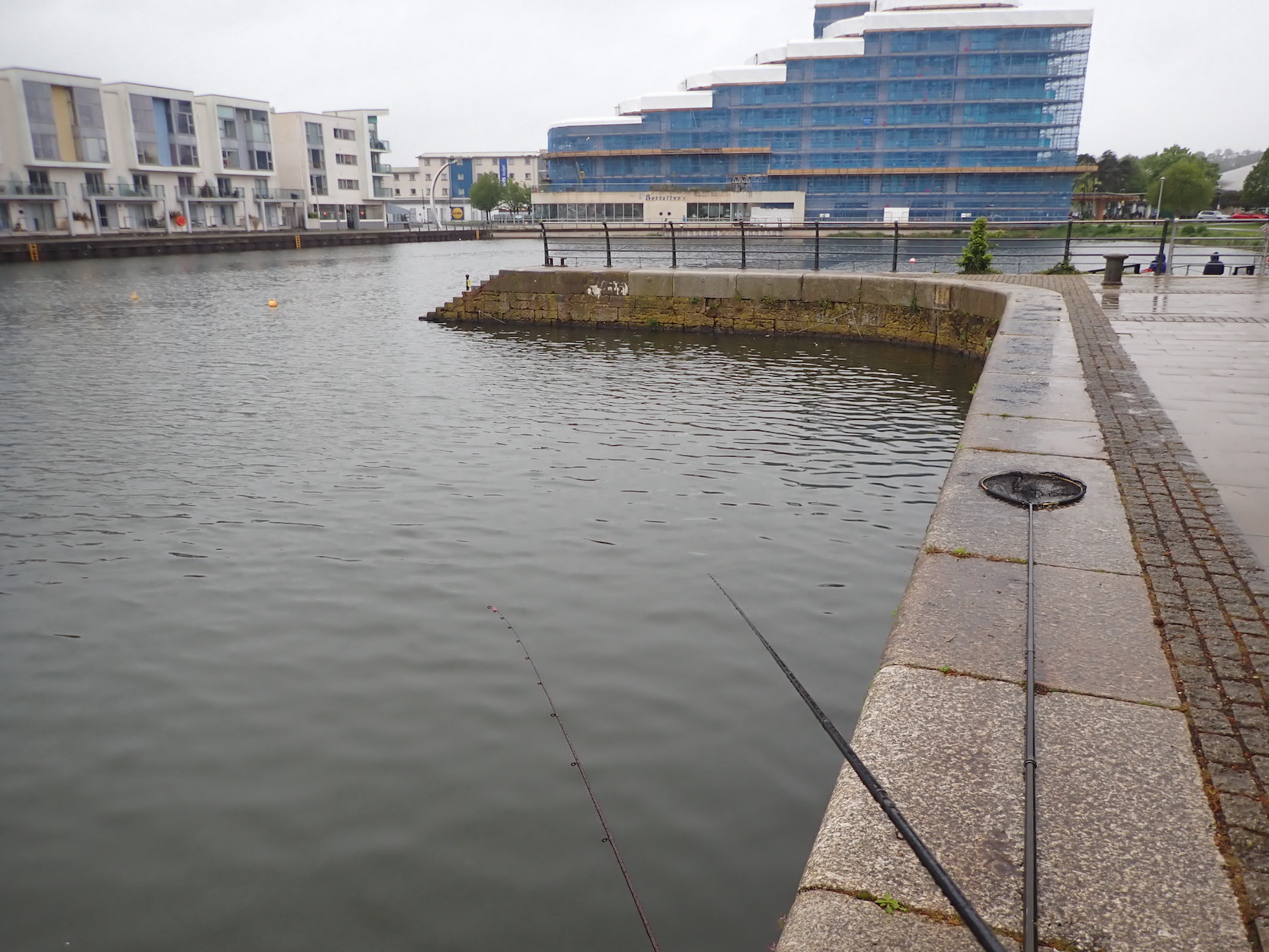
(Below)
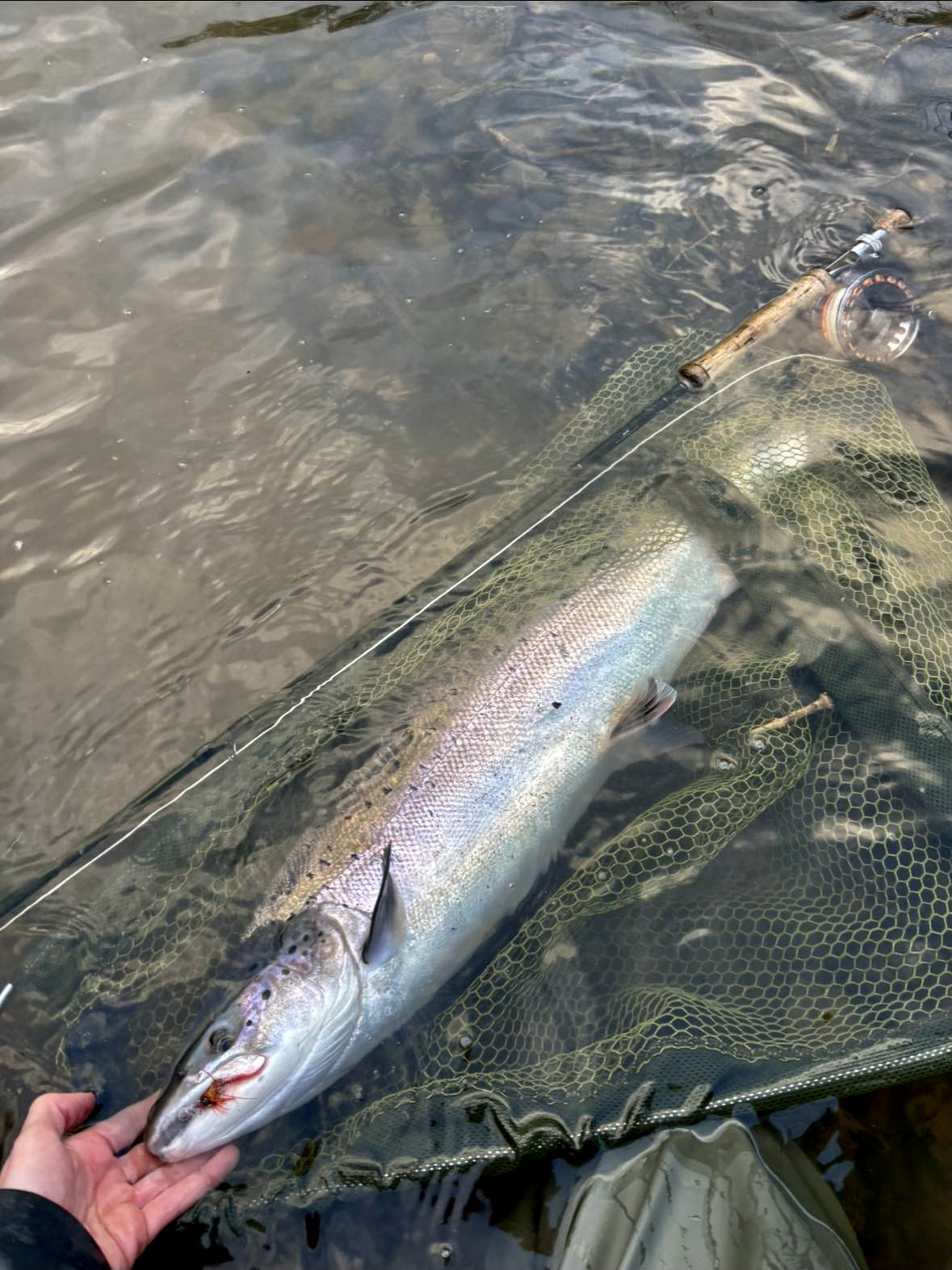
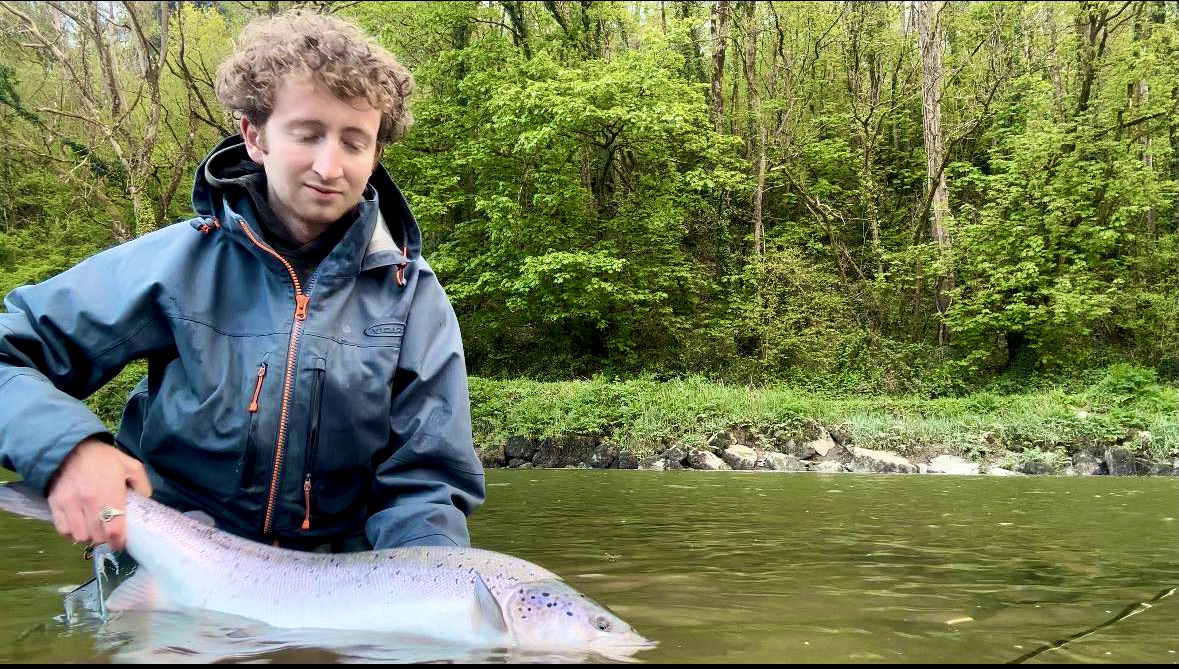
“After an awful start to the season with river heights rarely dropping below 1m on the gauge, I’ve finally managed to get out salmon fishing a few times recently. After what feels like endless blanks over the last couple of years, I’m over the moon to have caught this 13lb salmon on a single handed rod, full floating line and small shrimp style fly. It feels like a great privilege to catch a fish like this on the Torridge as they become rarer and I’m so happy that all the time I’ve put in has been worth it.”
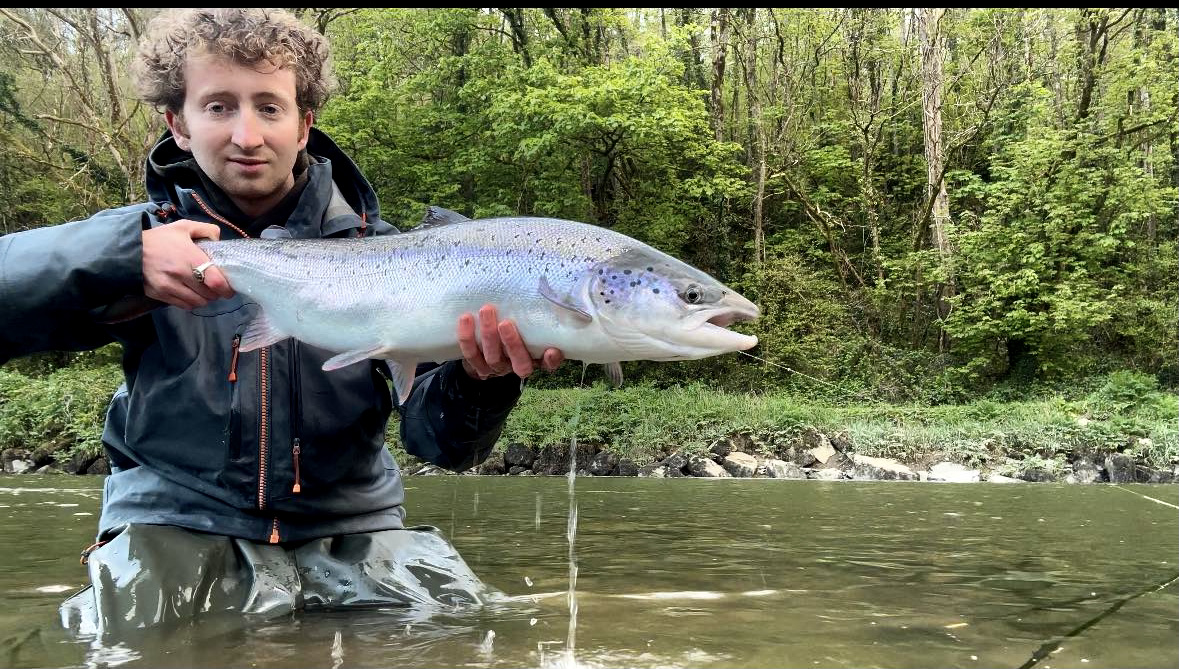
Stuart Gardener was a founding member of the South West Rivers Association in the 1960’s and created an annual award to be presented to someone who has done exceptional work for fishing organisations in the South west.
This encompasses the twenty two South West River Associations.
This year the award was presented to Stephen Phelps at the Associations AGM at the Arundell Arms the beating heart of West Country Fishing. Stephen writes :-
“I was presented with it, I’ll hold it for a year.
At yesterday’s SWRA AGM i was speechless, just mumbled a “thank you”.
Today I realise the enormity of it to me. I will, I’m sure not receive anything so special again.
Previous recipients include Charles Inniss, previous chairmen of the association, even Lord Clinton our President, until he passed away about a month ago.
Hope you don’t mind me sharing but I am overwhelmed chuffed.”
A pollution incident on the River Taw caused wide concern across the angling community. Fortunately there were no reports of fish deaths following the incident that affected several miles of the mid to Lower Taw. The Environment Agency carried out an investigation and will undoubtedly continue to monitor the situation.Anglers and those at the water edge are encouraged to report any pollution concerns to the EA on the hotline number 0800 807060
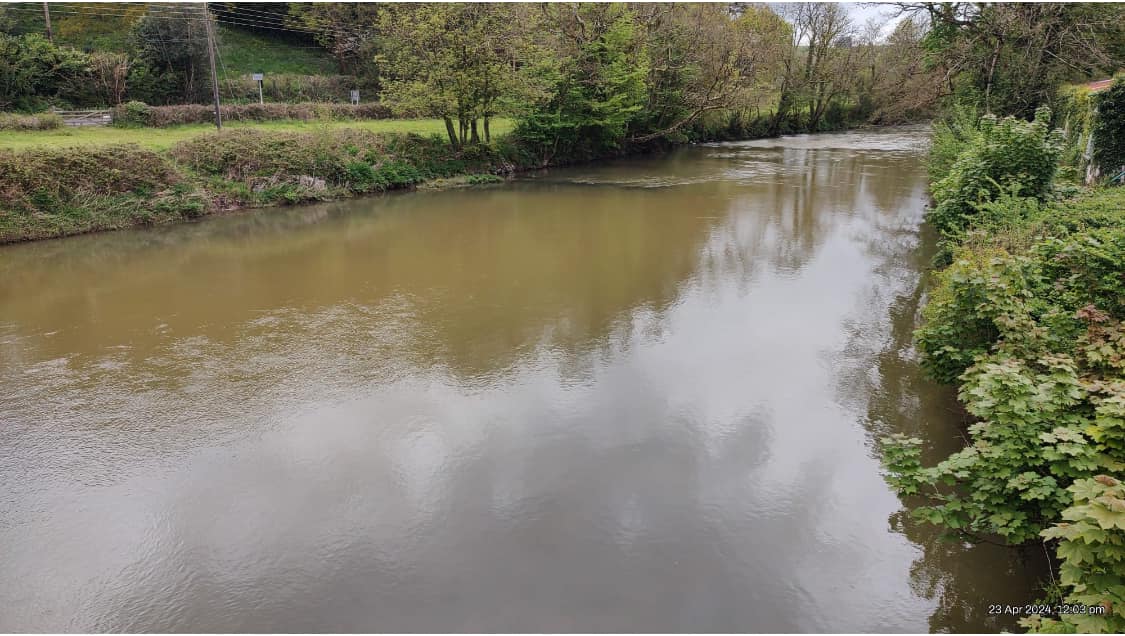
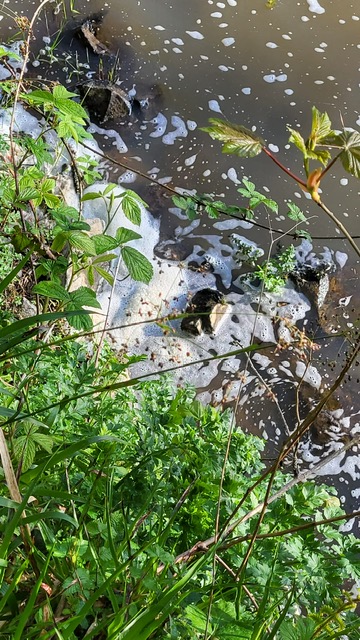
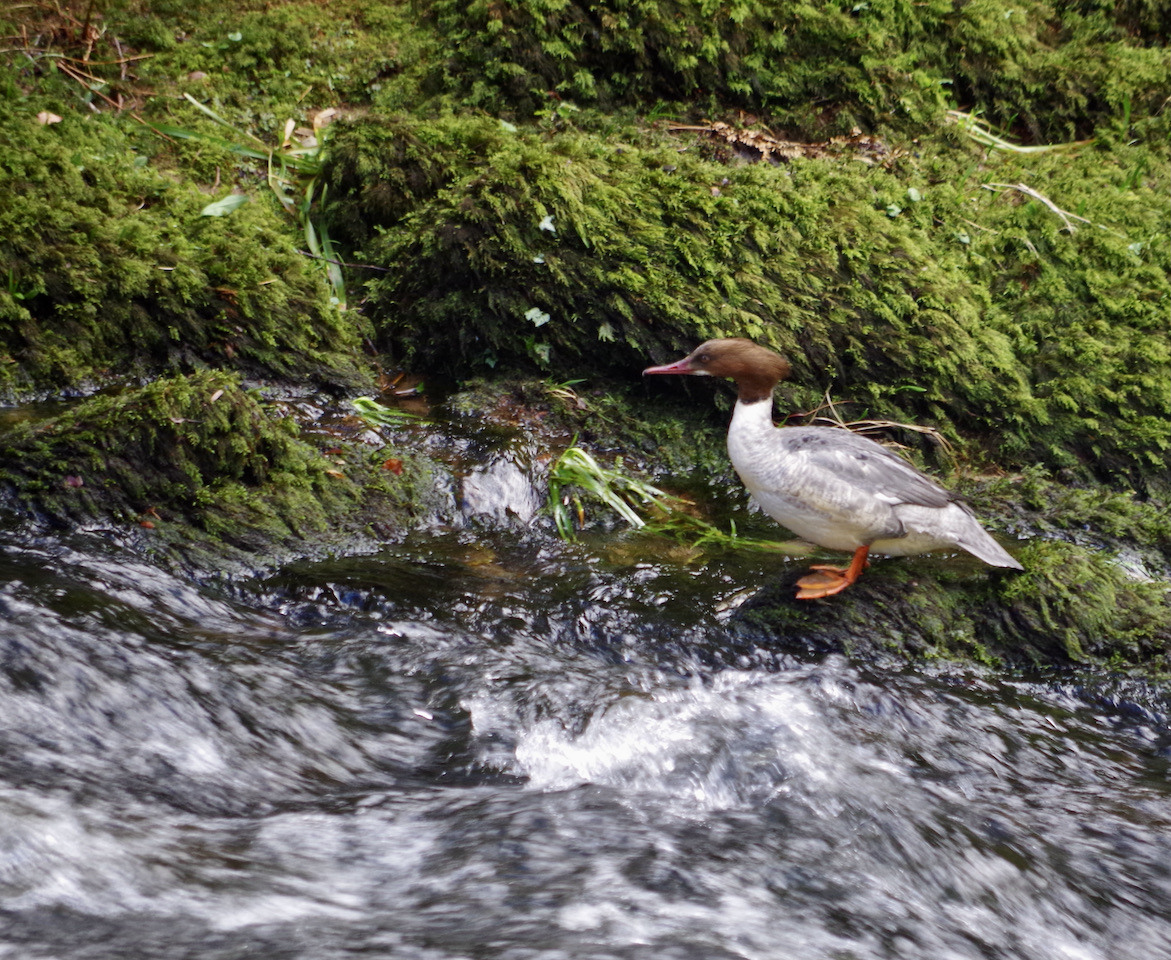
Anyone who cares for the ecology of our rivers will be concerned about potential damage to fish stocks by predation especially when the salmon is now classed as endangered. The River Exe and Tributaries Association is anxious to obtain some science-based evidence as to the extent of this problem and has asked for assistance from DAA members, amongst others, to help gather information which will be relevant to any such studies.
In the first instance, whilst an online recording facility is awaited on the RETA website, please can you report any sightings of otters, cormorants or goosanders to Alistair Langford ([email protected]) the information should include:
An 8-figure grid reference for the location of the sighting – https://gridreferencefinder.com/
The date and time
Number sighted
In the case of a goosander whether it was male or female and if there were any chicks and if so how many.
The river adjacent to which the sighting took place.
Many thanks for your assistance
—
Lance Nicholson
Fishing & Guns
9 High Street
Dulverton
TA22 9HB
01398 323409
After one of the wettest Springs in living memory the rivers have eventually dropped to a good level and the first salmon of the 2024 season have been caught. A superb fresh run springer estimated at 20lb was caught from a middle Taw beat at the start of the week and several others have been hooked and lost on both the Taw and Torridge. I visited the a middle Taw beat for a short early evening session and the river looked perfect.
The latest River levels can be found on the GOV UK website :- https://check-for-flooding.service.gov.uk/station/3106
The link is the Umberleigh Guage and anything below 0.75 is considered generally fishable. The river levels should remain good for at least a couple of weeks but with trees absorbing plenty of water we will be hoping for rain by mid may!
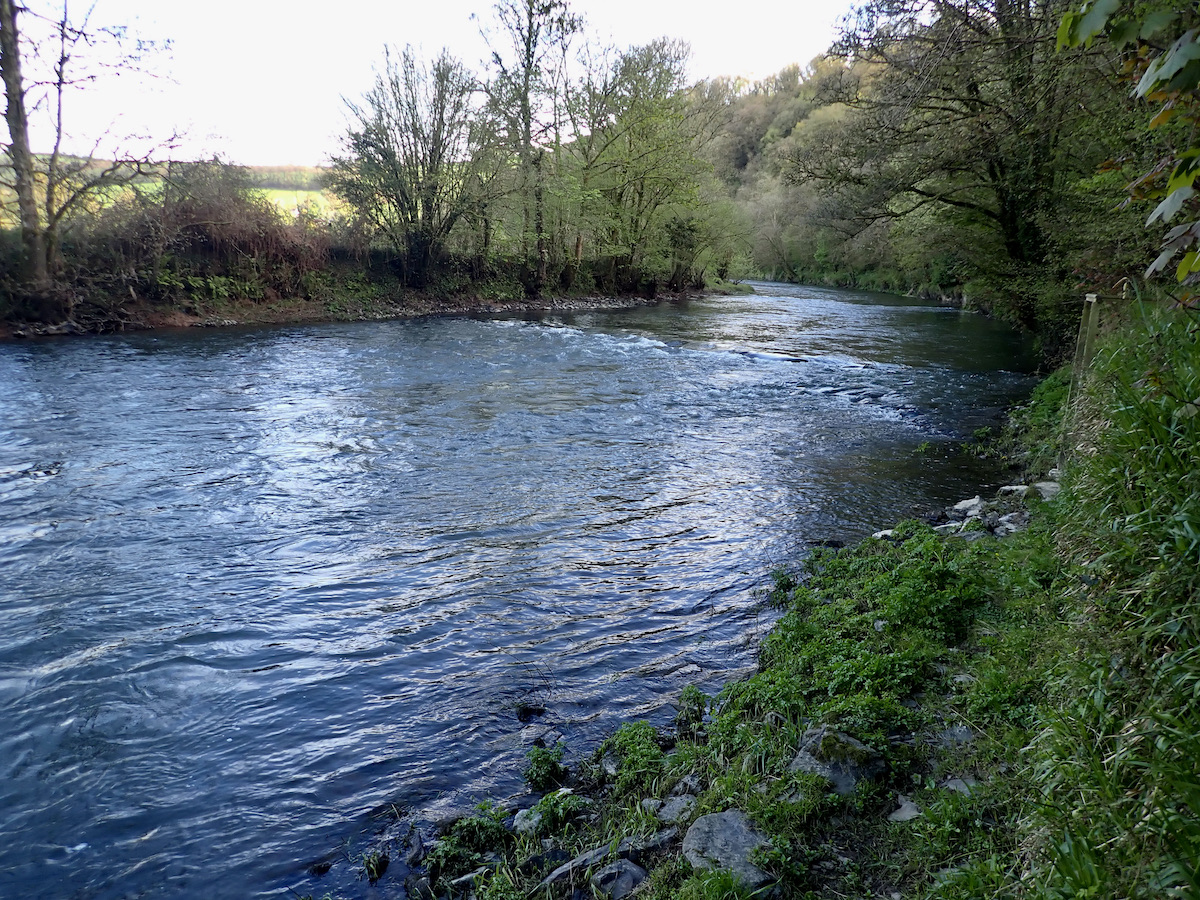
Dulverton Angling Association have secured fishing on new beat “Old Woman Beat” offer trout, grayling and the chance of salmon later in the season. Visit their website for the latest news.
https://dulvertonanglingassociation.org.uk
